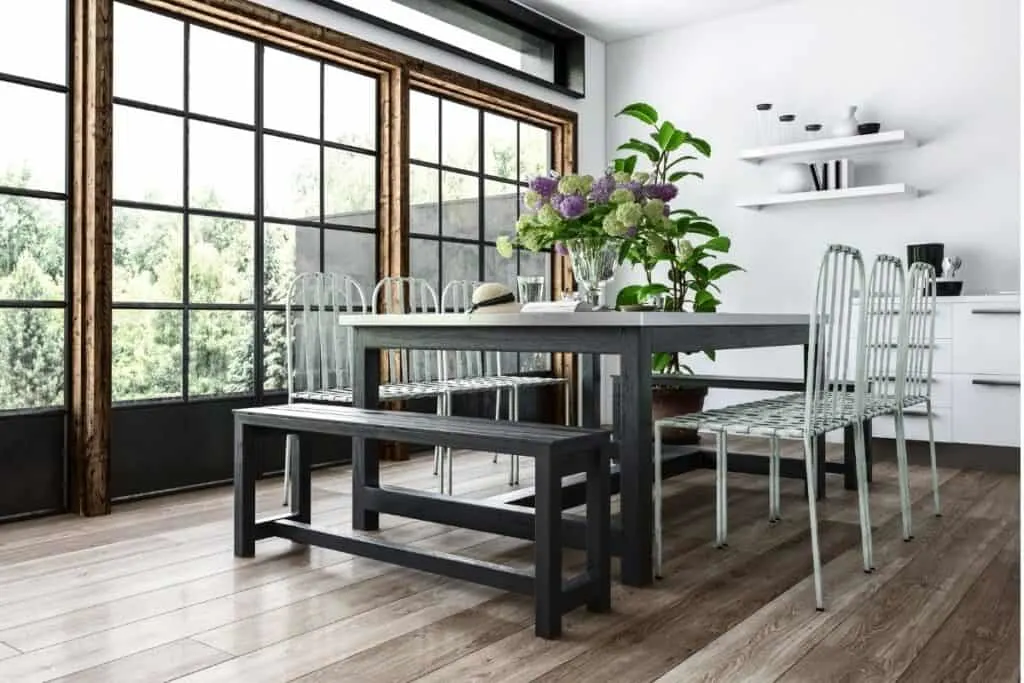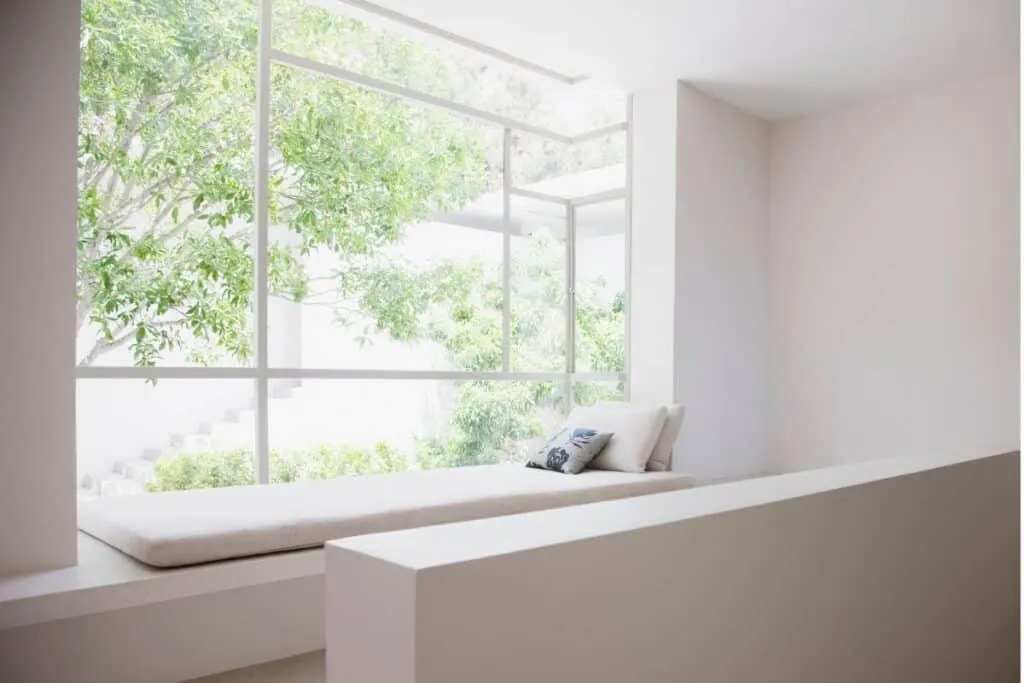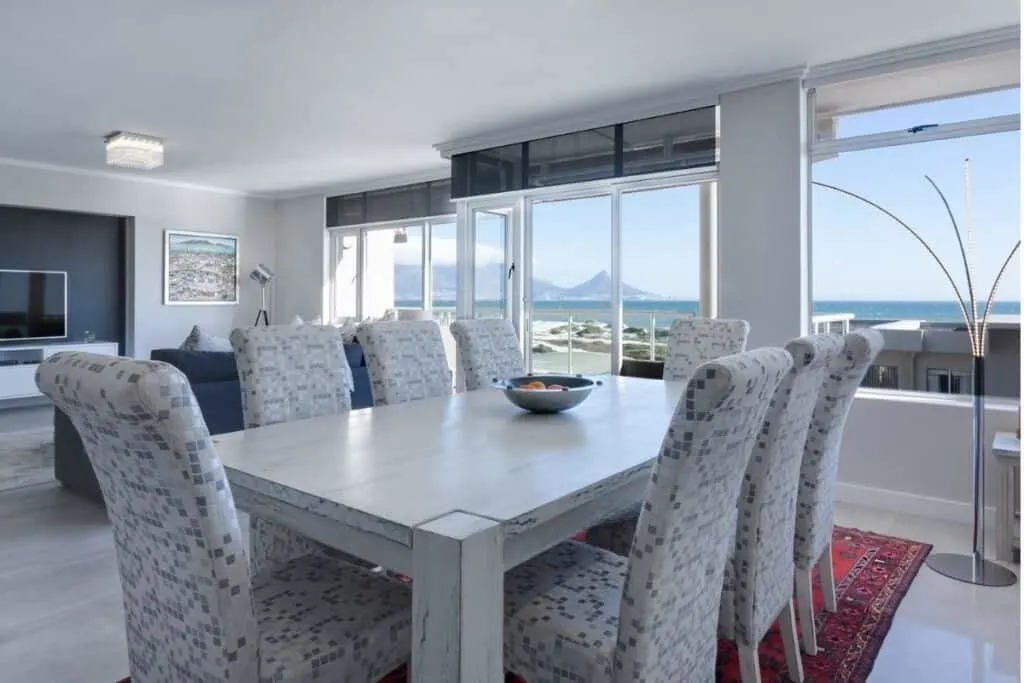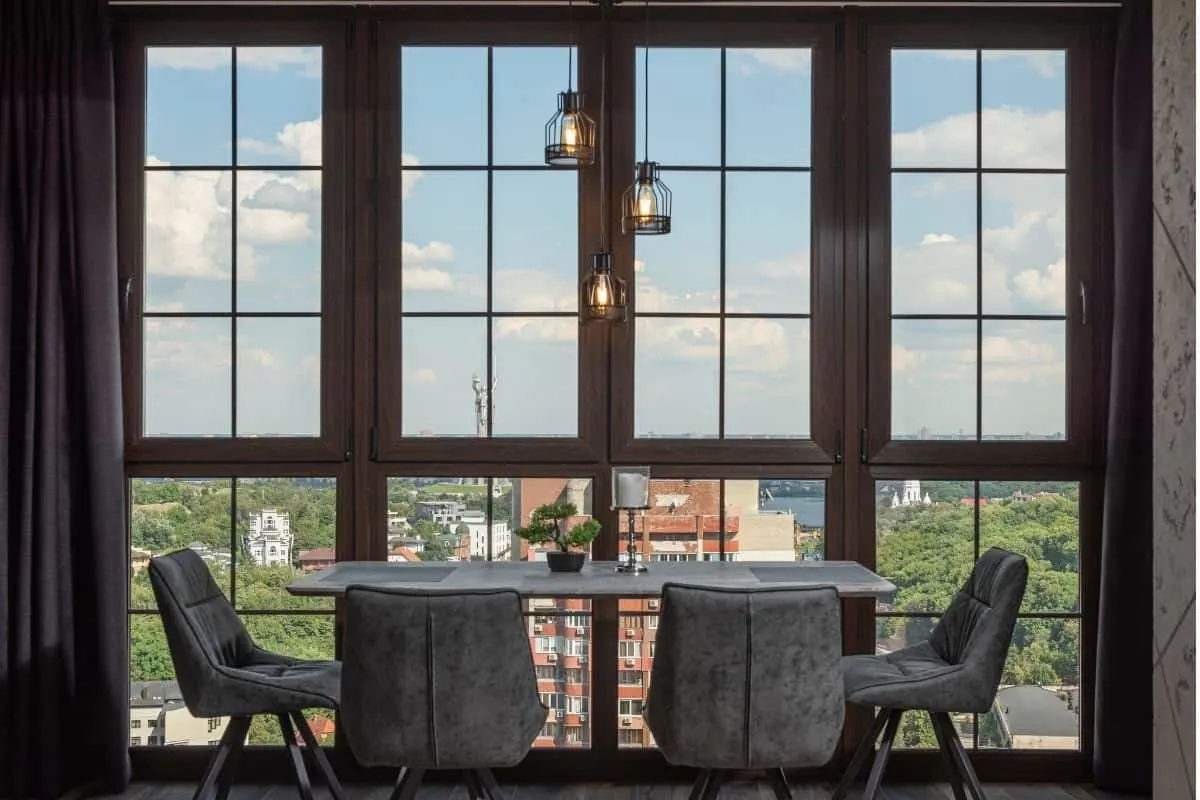For the last few centuries, white windows have been the standard in the housing design space. Nearly every window manufacturer lists their default options in white, with orders that ship right from the factory. However, black windows have become a growing trend in home design that many people think will stick around!
When it comes to deciding on either black or white windows, it’s easy to get lost in the pros and cons of the two. This guide will walk you through the benefits of black and white windows so that it’s easier to understand what each design does for your home!
The Pros Of Black Windows
As the rising fashion, black windows offer advantages over white windows in making design statements.
These advantages speak to the aesthetic and design benefits of the current, hot look for modern homes!

#1 The Modern Fashion
Black window trims are in! As the modern fashion, black windows offer a look that is considered modern, given its more recent use in design. They give a new, industrial look to your home when used well.
However, not all homes that use black windows are newer designs. An older home can benefit from black windows, depending on what the interior and exterior designs are.
Traditional homes like those typically seen on the East Coast are working in more black window trim as they get renovated so that their owners can keep up with the modern style.
#2 A Dramatic Difference
Black windows create a stark color difference between themselves and lighter tones. Your eye catches this difference and tells your mind that there’s something big going on.
Otherwise, why would there be such a drastic change in color for the design?
Our eyes get pulled to these shifts in color. This effect is one of the main points behind black windows – they take advantage of your eye’s ability to see those color changes readily.
Thinner frames tend to do this more fiercely as they create an outline that is just bold enough to catch your attention.
#3 Accentuated Views
All this color changing and eye-catching serves a purpose as it draws your eye towards another feature of the house’s design. Perhaps your eye catches the row of windows lining the back wall of a porch or the towering chimney of a two-story home.
Black windows capture interior views as well. When looking out through a black-trimmed window, the light coming in washes out the black trim from your view.
This design effect leaves only the outdoor sights to take in, giving you a seemingly borderless frame for your outdoor viewpoint. Creating this borderless view is one of the main ideas behind modern interior design, and also one of the draws of black windows.
#4 Doesn’t Need Covers To Look Great
Since black windows require that their frame be visible to work, they work best without any coverings or curtains. Shades can work with black windows, but these shades only work when they match the color of the windows.
Black shades and windows tend to darken rooms and can remove from the views and design statements made by using black windows in the first place.
So, for the minimal look around your windows, black windows work best, given how few options work well with them without making the design too busy!

The Pros Of White Windows
There’s plenty of benefits to using the classic white-trimmed window. While not as bold of a statement as a black window, white windows offer options for interior design and older styles of homes that black windows simply don’t have.
#1 Way Cheaper Than Black Windows
Since white window trims are the most common, it makes them the cheapest. Window manufacturers will keep a supply of these windows available at all times, keeping the price low.
Other colors, including black, have to be specially ordered in most cases. Many manufacturers are happy to do custom orders for windows, but these orders come at a cost.
On average, those special orders raise the price of your windows by 10-16% percent. This cost is factored into the budget regardless if you’re renovating an older home or designing a new one.
We priced out black windows on our last home and they were a whopping 25% more expensive at the time!
Given that window trim isn’t generally considered a big priority by many folks, that’s how you see white windows maintain their dominance.
#2 Great Accent For Darker Colors
Since black windows are best for contrasting lighter colors, it only makes sense white windows would do the opposite!
White windows create a similar effect against darker colors, catching your eye and drawing your attention to other design features.
That’s not to say white windows don’t work for lighter colors, though. Since white is a very plain color, it blends better than black and allows lighter colors to come through. This is true for both interior and exterior design, too!
#3 Matches Older Styles
Black windows don’t match every house design out there. While black windows can accentuate parts of modern home design, older homes weren’t designed around this trend. This is one reason you’ll see many homes built a while ago that have white-trimmed windows.
White windows offer a clean, white look. These older homes weren’t designed with the large windows or tall ceilings you see in modern designs.
The windows didn’t need to be black to capture outdoor views or highlight fanciful designs in older homes. Instead, the plain look of the white windows allowed the homey comfort of the house to shine through.
#4 Accepting Of Coverings/Curtains
White windows can take just about any covering or curtain without making the design too busy or cluttered. The color white easily fades into the background when other, starker colors are brought into the design.
Shades and curtains of all kinds and colors will work alongside a white window. The white trim gives you more control over how much light enters the space past the window.
When you compare this to black-trimmed windows, they don’t offer the same degree of control, thanks to their limited coverage options.

The Origin of Black and White Windows
White windows have been the norm in homes for centuries. The clean look of the white trim allows other aspects of the home to come forth and keeps the outside of the house from looking too busy. Due to their popularity, white windows have become the default assumption in house design for a long time.
Black windows have been around for centuries as well, but not on homes. Black-trimmed windows go back as far as the 19th century, where they were used as the trim for factories and warehouses.
Since factories weren’t looking to create a homey feel, the black windows served their purpose of function over form.
As those factories in big cities closed and became reclaimed as businesses or apartment lofts, the black window trim began to see a rise in its use for design. Designers began to incorporate black windows into homes to emulate the styles of big city living, all thanks to some old windows from decades ago.
Conclusion
When it comes to deciding between black and white windows, the main factors are price and look. While the black windows can offer a bolder look and better feel, their expensive price tag can scare off many buyers.
However, white windows are common and don’t create the same feel as black windows. Like many trendy designs, the look comes with a higher cost, and that’s something you’ll have to decide if it’s worth it for you and your home!


